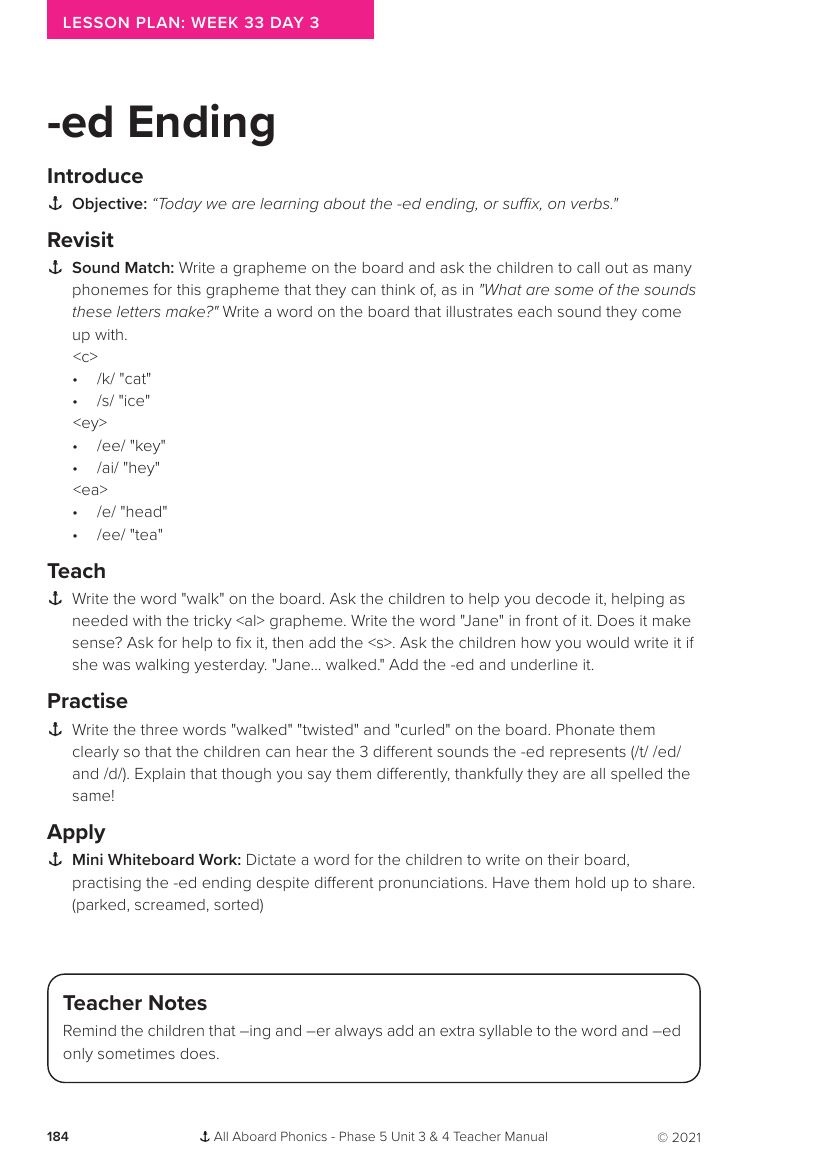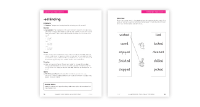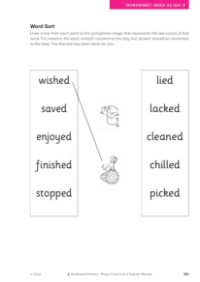Week 33, lesson 3 -ed Ending - Phonics Phase 5, unit 4 - Lesson plan

English Resource Description
In today's phonics lesson, the children will delve into the world of verbs and explore the -ed ending, also known as a suffix. The objective is to understand how adding -ed to a verb can change its tense to past. The lesson starts with a 'Sound Match' activity where the children are encouraged to match graphemes written on the board with the phonemes they represent. Through group participation, they will identify different sounds and words that correspond to these sounds, such as /k/ for "cat", /s/ for "ice", /ee/ for "key", /ai/ for "hey", /e/ for "head", and /ee/ for "tea".
During the teaching phase, the word "walk" is presented on the board for decoding, with special attention given to the tricky

